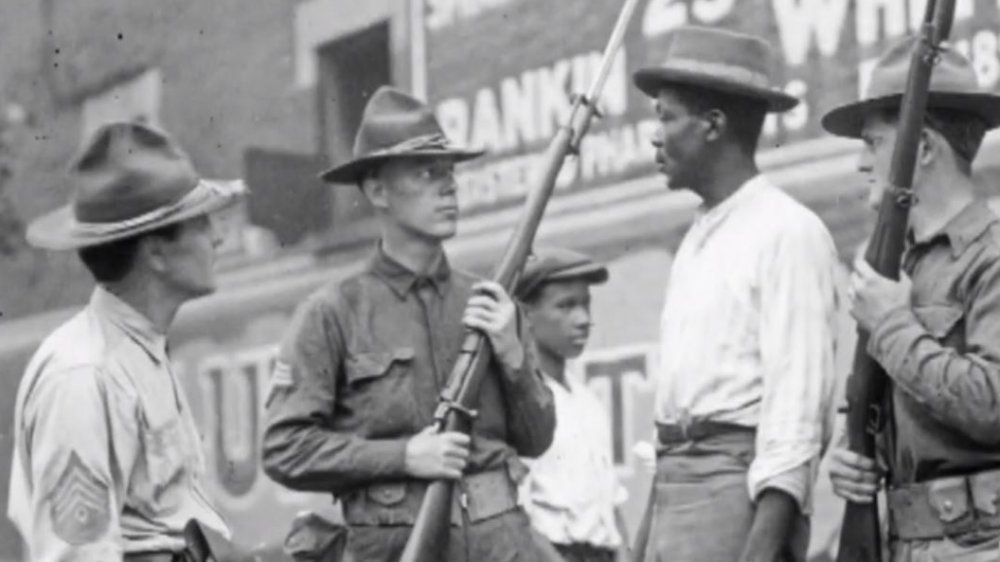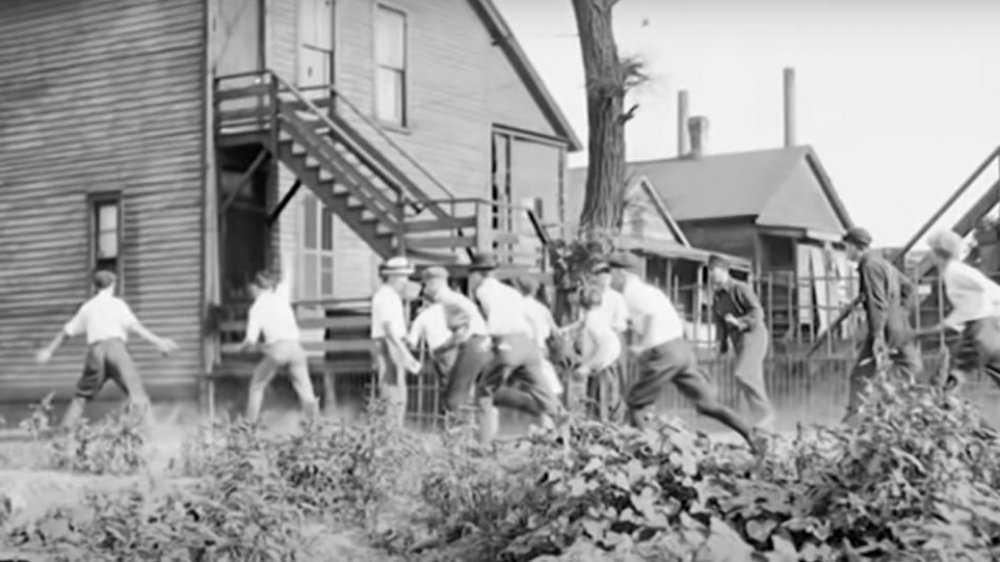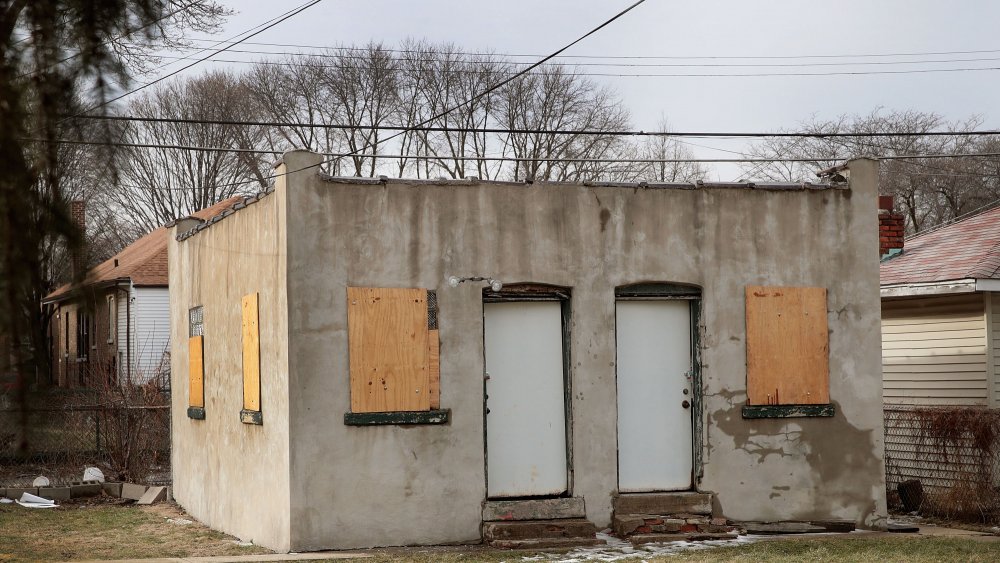The Tragic Truth About The Red Summer
1919's Red Summer race riots are a little-known fragment of America's bloody struggle with racism that portrays yet another link in the nation's chain of systemic ignorance, oppression, and violence. Now, over 100 years later, a plaque on the streets of Chicago quotes Dr. Martin Luther King, "A Riot is the Language of the Unheard," near the location where the week of violence began. The events of that year have scarred Chicago to the present day, and defined the city's current zoning and segregated housing, per History.
In the years leading up to 1919, black Americans fled Jim Crow-era South during what's referred to as the Great Migration, and were busy trying to build a better life for themselves in cities such as Chicago. There was tension among the working class, who were all competing for jobs, and of course race was an issue no one could overlook. All it took was one young 17-year old black man, Eugene Williams, passing over an informal boundary near 29th street on a homemade raft in Lake Michigan. He floated into a white neighborhood, and a group of white men stoned him from the nearby beach until Eugene drowned. When his body was pulled from the water, black witnesses tried to involve the police, but the police did nothing, as described in AP News. This was the trigger necessary for outright violence.
Violence that left a 100-year old scar
In 2019, 107-year old Juanita Mitchell, 7 years old at the time of the riots, recalled to ABC 7 Chicago that her daddy told her to hide behind a piano in the South Side of the city because a group of white men were coming. He pulled a gun and went to the window, and he was only one of many who prepared to defend themselves that week.
The black witnesses at the scene were able to identify a man who they saw throw a stone at Eugene Williams. In the meantime, a crowd had gathered and people were becoming angry on both sides. Somewhere along the line, after police refused to intervene, a black man in the crowd pulled a gun and the police mowed him down. Thus began the week-long brutality that engulfed Chicago, but was focused on the South Side near the stockyards. Many of the black men in the city had just returned home from World War I, and were more than capable of fighting. Eventually, the state militia was called, and in the end 38 people were dead — 15 white and 23 black. 500 people were injured (about 60% black), and 1,000 black families were left homeless after their homes were burned down.
Same injustices, new century
After the riots died down, Chicago formed a biracial committee to discuss how to prevent future violence. They came to an agreement on a number of common sense issues — law enforcement was guilty of racial discrimination, jobs opportunities were very competitive, and there were poor housing options available for black families — but none of these issues showed dramatic improved over the subsequent years. In fact, the city simply resorted to formal, legal segregation of housing and work zones. In 2019, USA Today ranked Chicago in the top 4 most segregated cities in the US.
These days, 48.2 percent of Chicago's 1.6 million African American residents live in majority-black neighborhoods, mostly in the South Side, which used to be known as the "Black Belt," an area where restrictive zoning laws concentrated blacks. USA Today cites figures that residents of majority-black neighborhoods are more than half as likely to go college as residents of white neighborhoods, and four times likely to be unemployed. A hundred years later, the same issues are echoing louder than ever across the nation.


